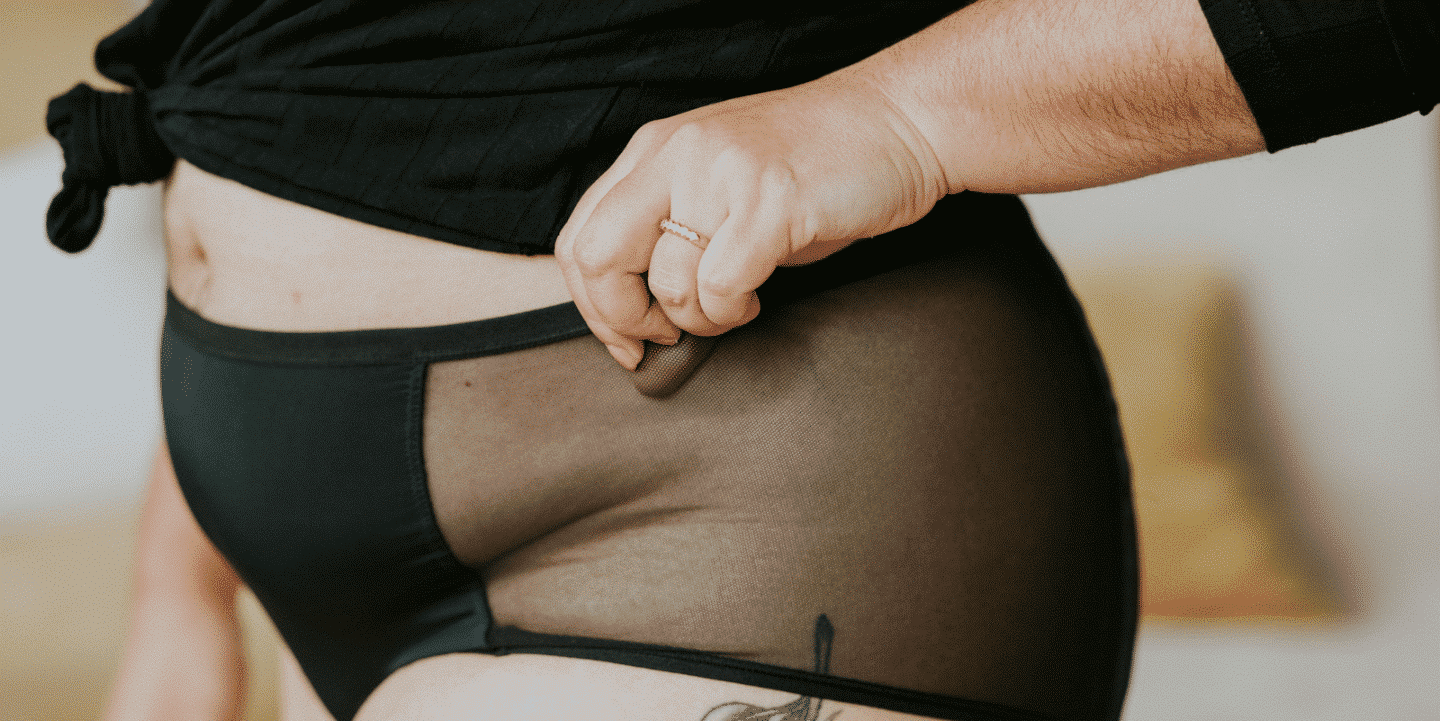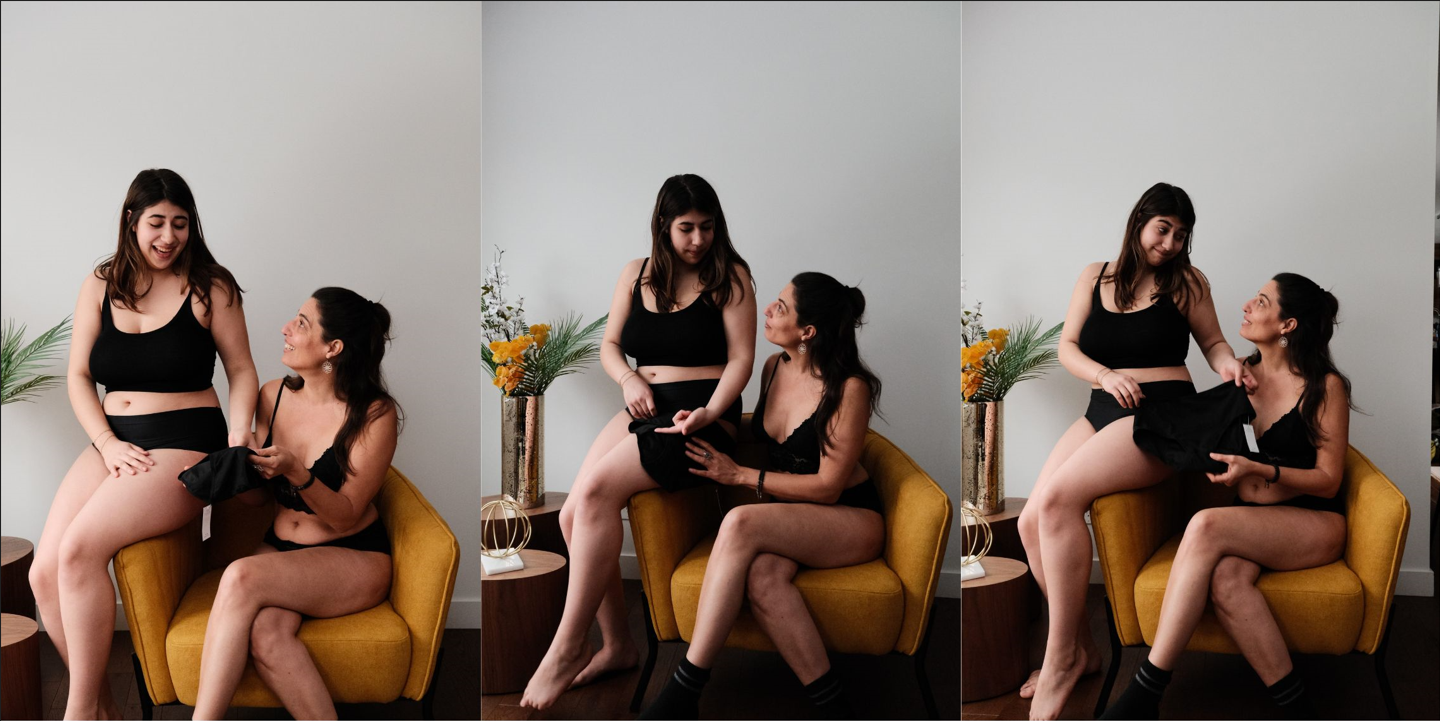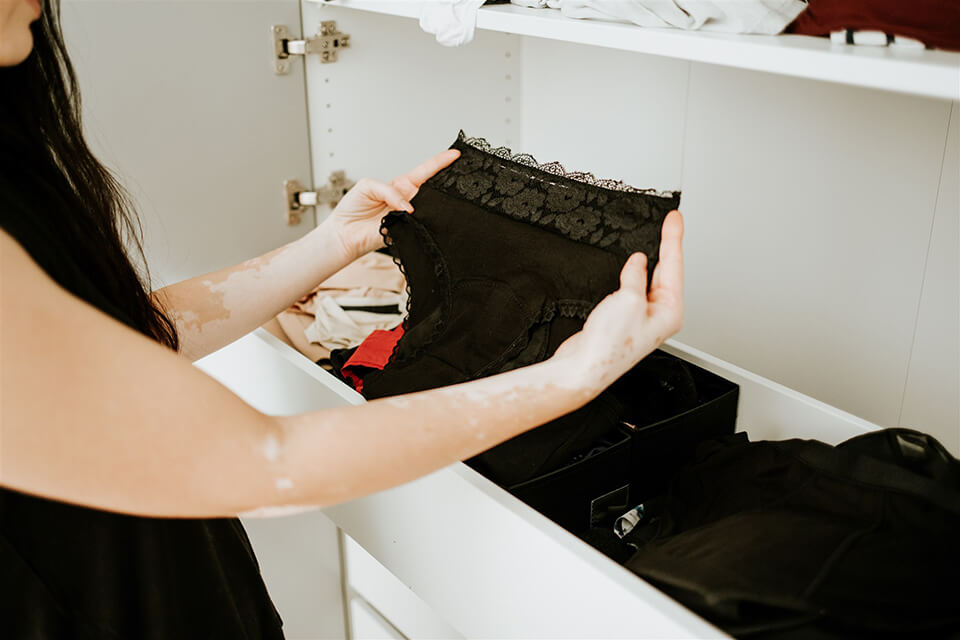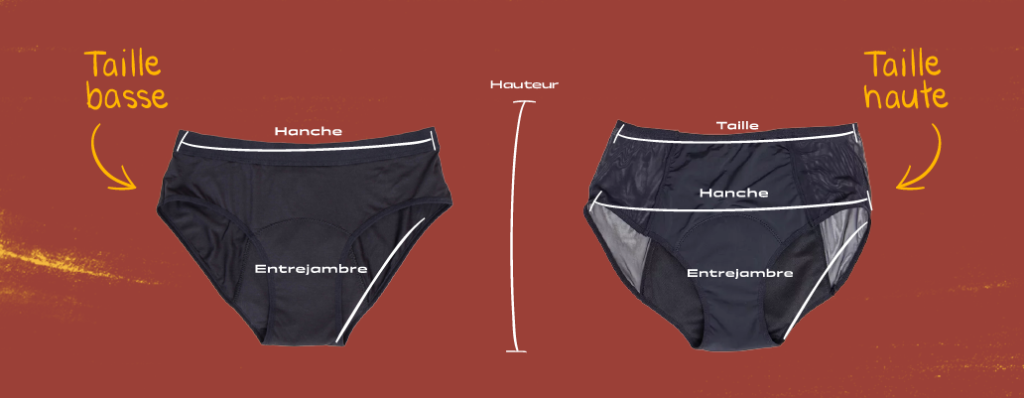Have you ever woken up one morning with a heavy heart, ready to spill Niagara Falls-worthy tears at any moment, for absolutely no specific reason? Then the day passes, and nothing goes right. All you want is a double chocolate brownie, with a scoop of ice cream on top. No, two, because you’re going to have to share with your lover, even if you’ve been finding him “very nice” all morning. In fact, everything annoys you today. You’re on edge and that’s not like you. But maybe you should take a look at your calendar. It’s probably your body sending you signals that your period is coming soon.
These signals are the symptoms of PMS or premenstrual syndrome. While these signals can be disruptive for some women, for others they may go unnoticed. But rest assured, you’re not alone in experiencing physical and emotional discomfort, once a month, twelve months a year. PMS affects around 80% of women. Unfortunately, this syndrome remains taboo and misunderstood. Some still think it’s just an excuse women use to justify their mood swings.
Today, we lift the veil on these ailments, which are still too often misunderstood, and suggest a few solutions that could help ease your symptoms.
PMS is a set of physical and emotional symptoms that appear one to two weeks before menstruation. These symptoms, such as headaches, bloating and anxiety, recur every month.
The exact cause of this syndrome is still unclear, but we do know that it’s linked to hormonal fluctuations that occur before menstruation, during the luteal phase of the cycle. And since hormones regulate so many things in our little bodies, a little more progesterone and a little less estrogen can cause a lot of symptoms, and disrupt our brain chemistry. These fluctuations can, for example, influence the production of serotonin, the hormone that regulates mood, among other things. PMS causes a wide variety of symptoms. More than 150 are listed. Symptoms usually disappear when menstruation begins.
My face has become a calculator
Your body may be giving you a forced throwback to your high school years. It’s possible to wake up one morning with big red pimples on your face at the age of 37. Acne is one of the most common symptoms. Hormonal changes lead to increased sebum production, which explains the appearance of pimples.
I’m so hungry!
We still don’t fully understand what causes cravings. Some scientists believe that hormonal fluctuations cause our blood sugar levels to drop, which would explain our cravings for sweet treats. In any case, perhaps food is simply a refuge to make us feel better (“eating our emotions”). By the way, if you’re panicking because your weight has gone up and you feel bloated like a Michelin man just before your period, rest assured, it’s not because of the fries you’ve been eating. It’s probably because you’re retaining water, another symptom of PMS.
It hurts everywhere!
Headaches, back pain, breast pain, heavy legs, bloating, constipation (digestive disorders) are all symptoms that can affect us.
Hello mood swings
Psychological symptoms are the ones that bother us most. We often feel misunderstood, especially when confronted with comments like: “Are you having a bad week or what? We’re talking about irritability, anger, impatience, feelings of depression and anxiety. These symptoms can be accompanied by memory and concentration problems. Once again, it’s the disruption of the brain’s biochemistry that’s at the root of all these ailments.
Exercise Regular exercise is good for your body’s overall health. This will help you sleep better, and as an added bonus, the production of endorphins during physical activity will give you a feeling of well-being.
Healthy eating A diet rich in vitamins (B and D), calcium, magnesium and Omega 3 is suggested. It is possible to take supplements if your diet does not meet your needs.
We recommend drinking plenty of water and cutting down on fast sugars, caffeine, tobacco and alcohol. Eating less salt can also help reduce water retention.
Eating several small meals throughout the day (spaced three hours apart), taking care to choose complex carbohydrates (wholemeal bread, cereals, legumes, etc.), helps regulate blood sugar levels and avoid compulsive eating.
That being said, you have to listen to your body and indulge once in a while, so if you’re in the mood for an extra cheesy poutine, go ahead and treat yourself!
Medication In addition to over-the-counter painkillers and anti-inflammatories such as ibuprofen, acetaminophen and Naproxen (to be taken with food so as not to irritate the stomach), if your symptoms are very violent, it might be wise to consult your doctor. He can suggest several other options (contraceptives, antidepressants, etc.).
Natural products
There are a number of natural products that can help relieve PMS. Note that we always suggest that you consult your doctor to check whether the option you have chosen is suitable for your body.
A number of herbs, which you can consume in infusion, have a miraculous power on PMS. Chasteberry and raspberry are super regulators of the menstrual cycle. In addition, ginkgo is a super energizer and evening primrose oil restores hormonal balance. It acts on breast pain, bloating and mood swings.
As for essential oils, sage with its many virtues (anti-inflammatory, antidepressant, etc.) and peppermint are good options.
And for those who prefer alternative medicine, many women achieve highly satisfactory results following acupuncture sessions.
Remember, you’re not alone! If you ever want to talk about it, check out your social networks. There are several support groups. Take a rest, do what makes you happy: a good restaurant, a hot bath, a short walk. Listen to your body, take care of it, pamper it, it’s precious.

Does the word endometriosis mean anything to you? Perhaps you’ve already heard...

De nos jours, il n’est pas toujours évident de suivre le rythme...

Have you ever woken up one morning with a heavy heart, ready...
En ce début d’année, êtes-vous de celles qui profitent de ce petit...

It seems like only yesterday that your daughter was playing with her...

It’s time for the menstrual revolution: one panty at a time 🙂...

More than just menstrual panties!
Copyright © 2023 | Design by
Alexem Studio
Gère tes commandes, tes retours et tes listes d’envies
Sign up for our newsletter and receive 10% off!
Manage your orders, returns and wish lists
As you’ve probably noticed, our panty designs as you’ve always known them are on clearance. Don’t worry, we’ve simply made changes to our manufacturing processes. Older models won’t be coming back, but you can find similar models in the new collection.
Please note that clearance items are neither exchangeable nor refundable.
A minimum of 3-5 panties will give you time to wash and dry after use, then carry over to the next cycle. Choose different absorption levels to suit your menstrual flow.
Do you want to stop thinking about washing and make sure you have enough? Count 2 to 3 panties per day of menstruation. All you have to do is put them in the wash at the end of your period!
Hip and waist sizes are quite similar from one model to another. The difference is most obvious in the crotch.

| Your hips | Recommended size | 27-29 | XXS |
|---|---|
| 30-32 | XS |
| 32-35 | S |
| 36-39 | M |
| 40-44 | L |
| 44-47 | XL |
| 48-50 | XXL |
| 51-53 | 3XL |
| 53-55 | 4XL |
If you’re hesitating between 2 sizes, it’s up to you to decide whether you prefer tighter-fitting panties or more room inside. You can also view detailed measurements for each model ⤵
➜ Above all, shop according to your menstrual flow.
➜ High-absorption knickers are ideal for abundant flow, medium-absorption knickers for medium flow, and so on.
➜ As your flow varies over the days of your period, you may well choose different levels of absorption.
➜ The choice of panty shape is your own personal choice. Simply choose the shape you usually like to wear.
If you’re looking for safety and peace of mind above all else, opt for high protection. The more absorbent your panties, the longer you can wear them and the lower the risk of leaks.
You don’t have such an abundant flow and want to maximize your comfort? Opt for medium and light protection, the thickness of the protective band is 2 times thinner than those of high absorptions.
❓Panties are generally worn all day long, or a little less if you have a very heavy flow. You can therefore count on one pair of panties during the day and one pair at night, i.e. 2 pairs of panties per menstrual day.